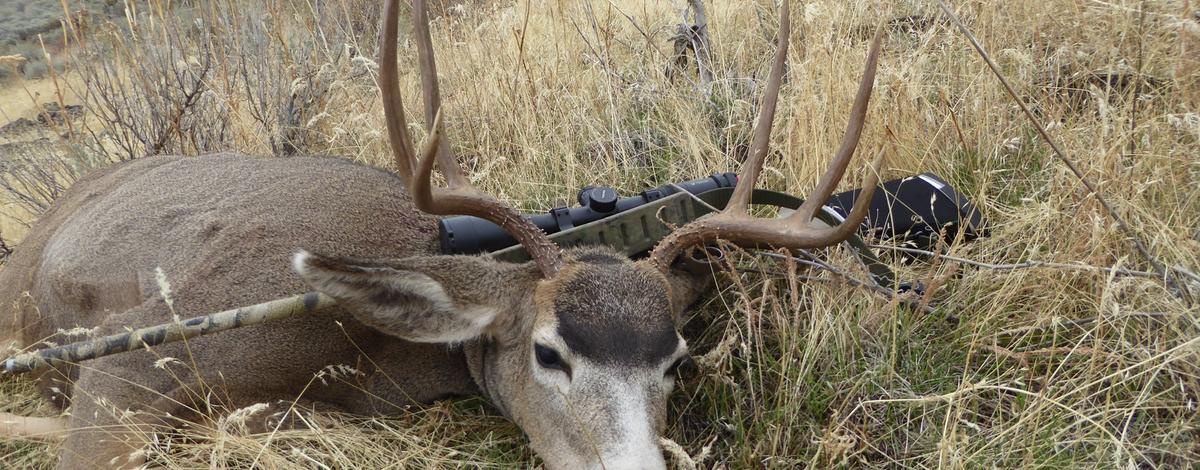Whether it is an animal salvaged from the roadway or harvested during hunting season, it is important to dispose of the carcass properly after processing is complete. Hunters are required to remove and care for all edible portions of meat. This includes the meat from hind quarters as far down as the hock, meat of the front quarters as far down as the knee and meat along the backbone which is the loin and tenderloin.
All inedible portions should be double-bagged, securely tied, and put in your garbage container for collection. If your residence does not have garbage collection services, the remains may be taken to the county transfer station. These facilities will accept the inedible parts of big game for no charge from residents who live within that county.
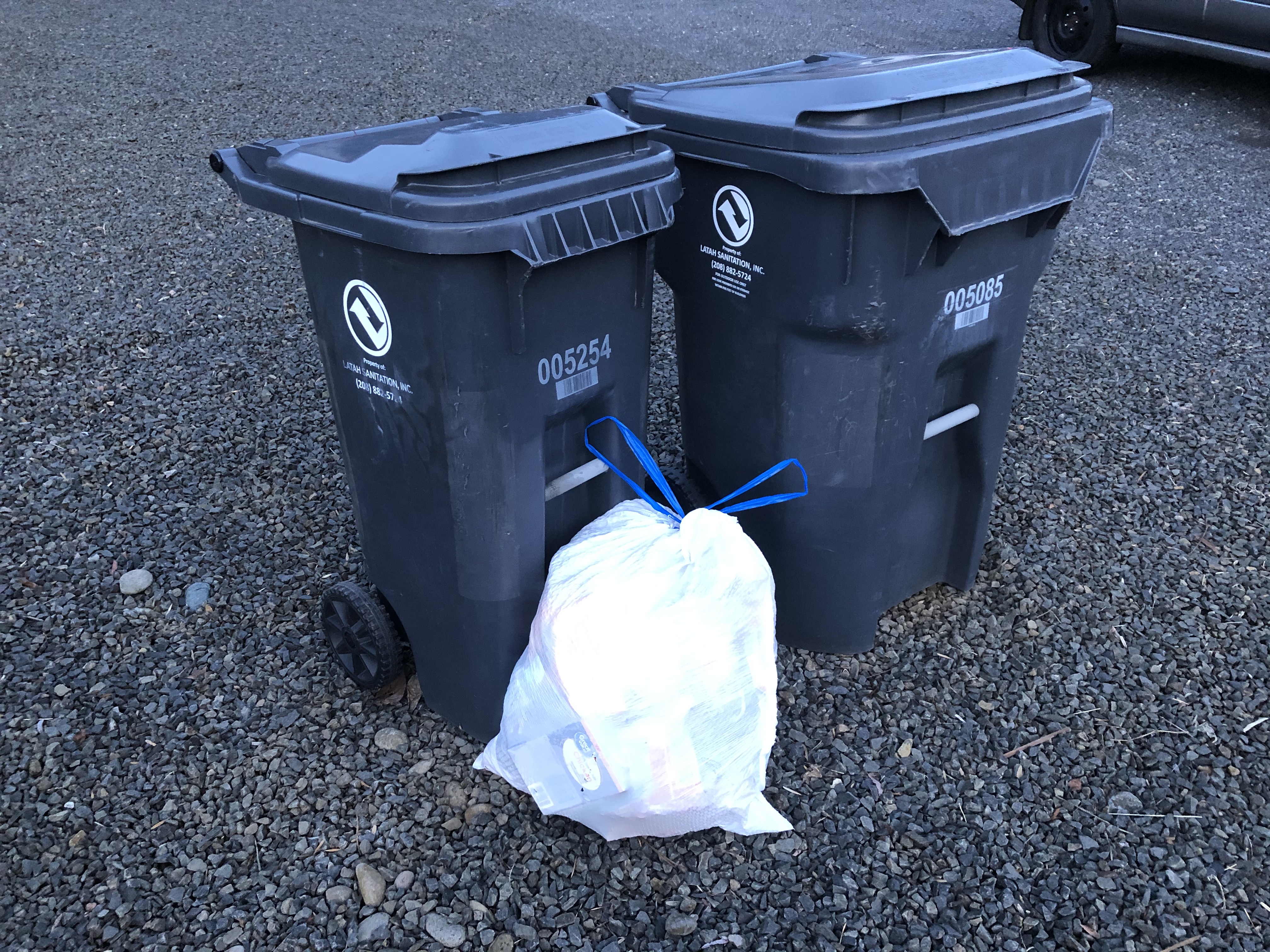
Proper carcass disposal: In-edible portions should be double-bagged, securely tied, and put in your garbage container for collection.
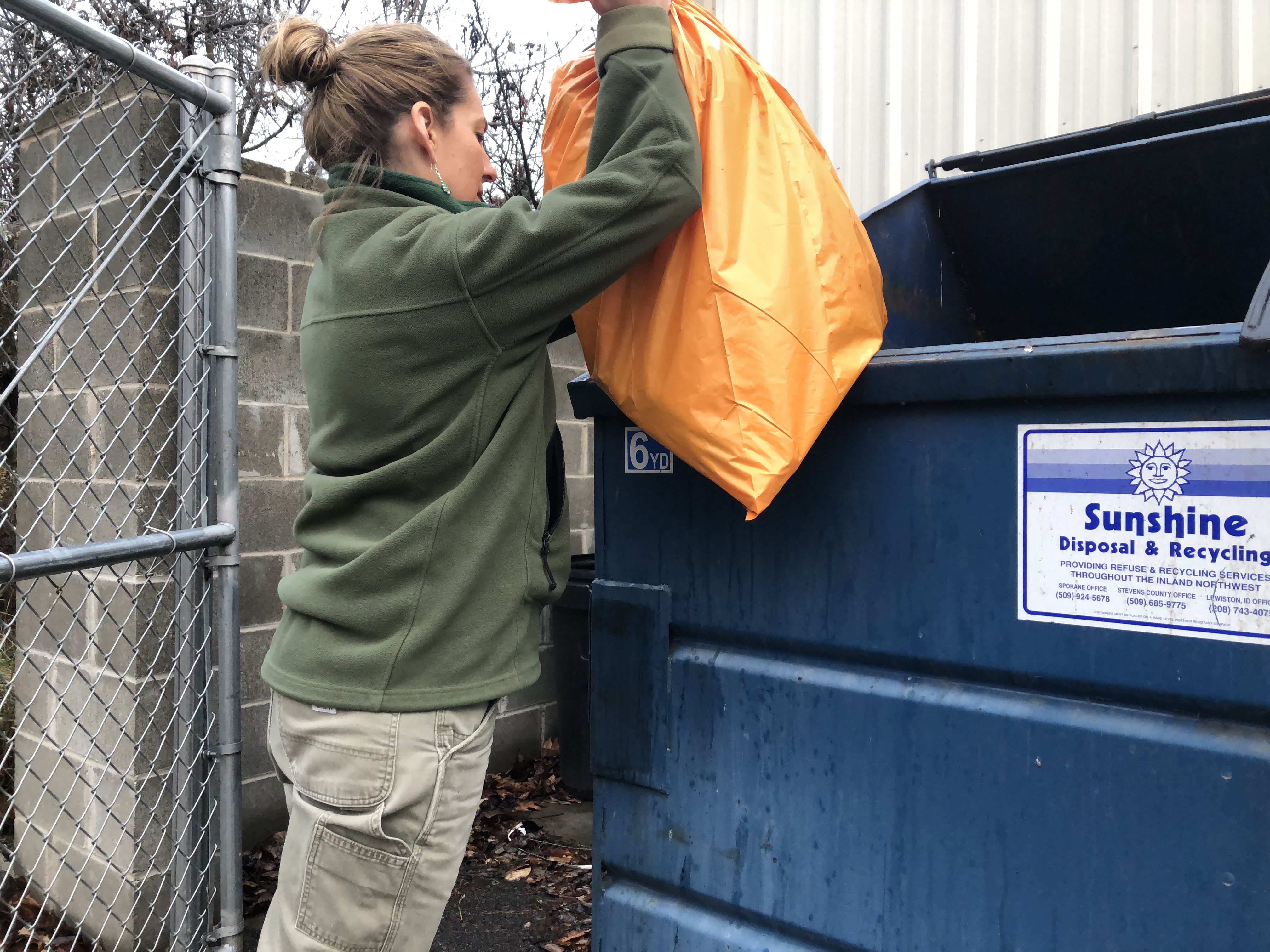
Proper carcass disposal: In-edible portions could also be put in dumpster for collection.
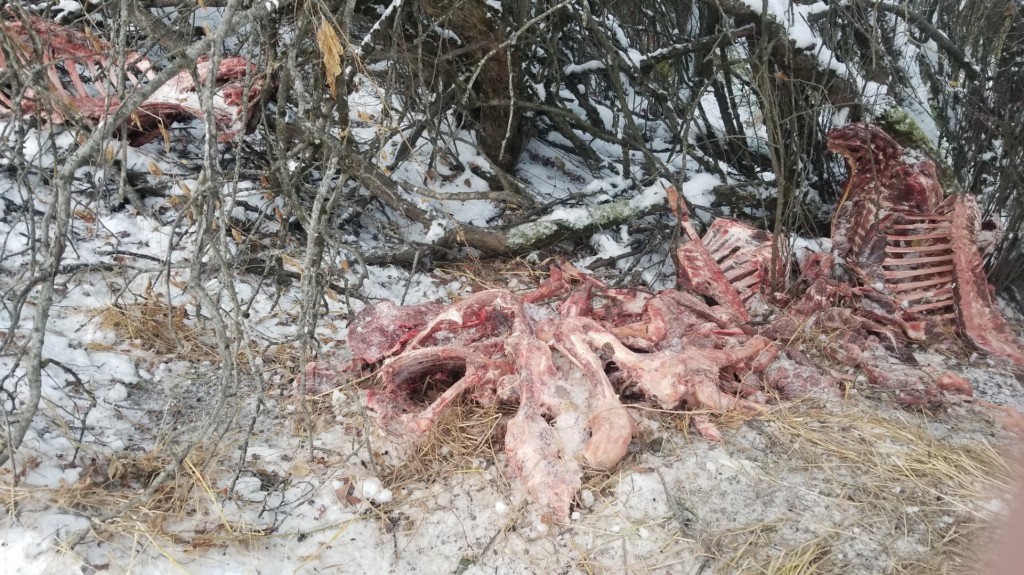
Improper carcass disposal: Carcass dumped along roadside
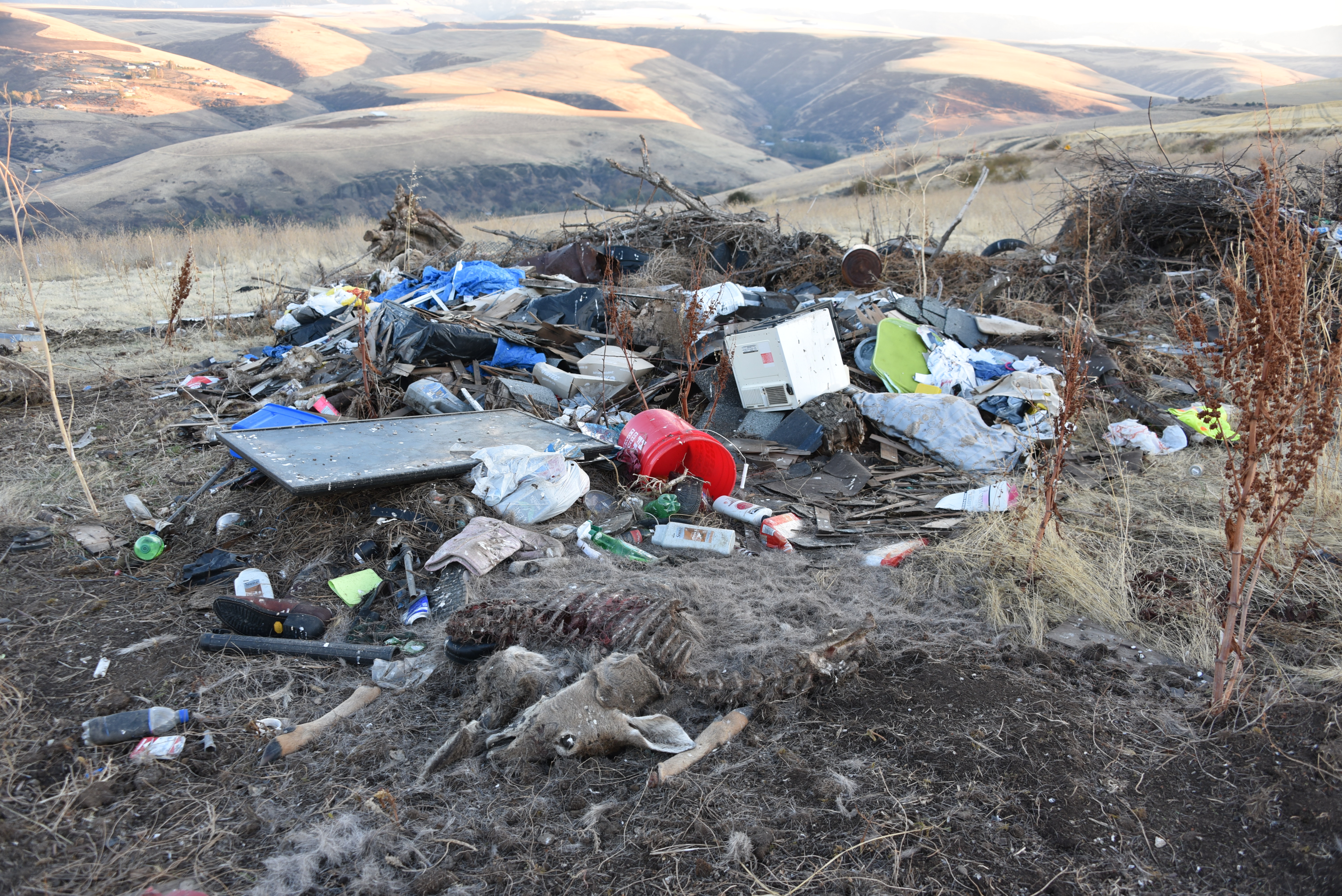
Improper carcass disposal: dumping carcass and other trash in a pile along roadway is considered littering and is a violation of the law.
Here are four main reasons why proper carcass disposal is important:
Reason #1: Dumping along roadway, private or public property is illegal and considered littering
Dumping a fleshed out game carcass along the roadside, public land or on someone else’s property without permission is considered littering, which is a violation of Idaho law. “Some hunters do not know that the proper and easiest way to dispose of a carcass is along with your normal garbage,” says Conservation Officer, Mark Carson.
Reason #2: Public health & disease issues
Nearly all hunters will dispose of the unwanted portions properly. Others will take the fleshed out carcass and dump them in poorly selected locations. Unwanted big game carcasses that end up on the side of the road or in ‘vacant lots’ become eyesores and public health issues. With the threat of diseases such as Hoof Disease in Elk, first detected in Idaho in 2018 and Chronic Wasting Disease (CWD), not yet found in Idaho, there is potential of the spread of disease from animals dumped without proper containment.
Reason #3: Roadway hazard/attracts scavengers
Carcasses can also become roadway hazards because they attract dogs and scavenging birds (ravens, magpies, and bald eagles). The scavengers then become dangers to drivers who swerve to avoid hitting them.
Reason #4: Gives hunters a bad image
Dumping unwanted remains is also inconsiderate of nearby residents. It reflects poorly on all hunters and damages the image of hunters among those people who do not hunt. It does not take many improperly dumped and highly visible carcasses to generate strong negative reactions.
Calls come in to Idaho Fish and Game offices every fall about “poached” animals along roadsides. Most end up being improperly discarded remains of legally harvested animals. But it takes the valuable time of a Conservation Officer to check each one out.
If you harvested an animal this fall, remember to fill out your harvest report. If you salvage an animal from the roadways, make sure to fill out the roadkill/salvage report and keep a copy with you or the animal until final processing is complete.
Keep Idaho's roadways and private property clean, dispose of your carcass properly. Contact the regional office for more information (208) 799-5010.

